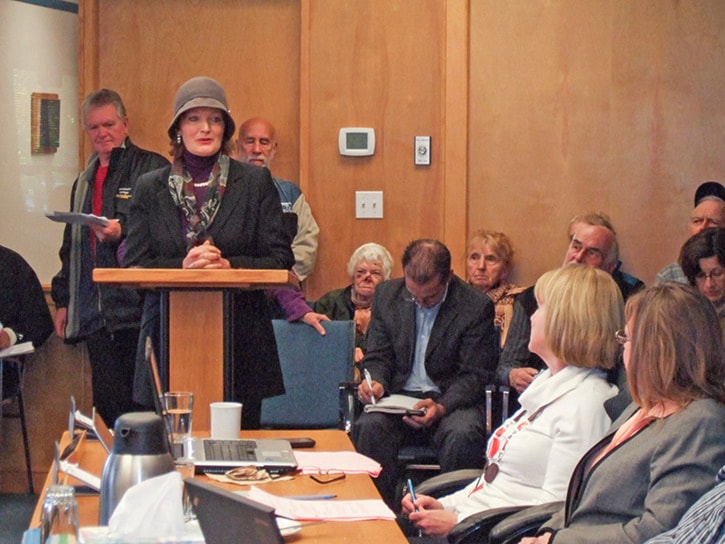They listened but they didn’t make any promises.
Columbia Shuswap Regional District directors were asked to support the development of a safe cell tower consultation policy and adopt those parts that would aid in developing a policy for rural areas of the regional district.
Una St. Clair, executive director of the North Okanagan Citizens for Safe Technology Society, made this plea at the Oct. 16 board meeting.
“As well as the removal of present towers from residential areas, and particularly those in Canoe where the radiation over to Sunnybrae and beyond is being intensified by water is critical,” wrote St. Clair in a request to appear before the directors.
Included in her presentation were issues concerning sources of electromagnetic exposure and co-location of microwave cell towers, range extender and radio frequency collector locations, exposure risks in high-density areas, avoidance of sensitive locations and current developing health, legal and insurance aspects.
Wearing a chic hat with a protective aspect, St. Clair explained she and her husband had started one of the first cell phone companies in Vancouver.
“I cannot be in a microwave-laced room,” she said, noting she must wear protective shirts as well as hats because of the effects of long-term exposure.
Cautioning that children are disproportionately affected, St. Clair pointed out that on May 31, the World Health Organization classified radio frequency electromagnetic fields as a “2b possible cancer risk – right up there with DDT and other insecticides, lead and a host of other hard-to-pronounce toxic chemicals.”
St. Clair a charged a number of companies with making misleading statement. She also took issue with the fact Health Canada’s Safety Code 6 provides guidelines for thermal effects, not biological ones.
St. Clair referred to a number of scientific reports that have raised alarm bells, including the collapse of bees and the harmful effects on man and animals due to “electrosmog.”
“There was a lot of pain and suffering from lead, asbestos and tobacco before the companies told the truth,” said St. Clair, noting bee colonies have collapsed after very short encounters with microwave exposure.
“This is very telling and very frightening, I think this should concern all of us. And here’s the meat of the issue – some insurance companies have studied the matter and have refused to cover anyone in the telecom industry because the liability issue is expected to be higher than tobacco and asbestos.”
St. Clair suggested directors designate the entire regional district a sensitive area and, among other requests, asked for CSRD to request removal and re-positioning of cell towers which have been sited within 500 metres of area where people, live, work and go to school.
